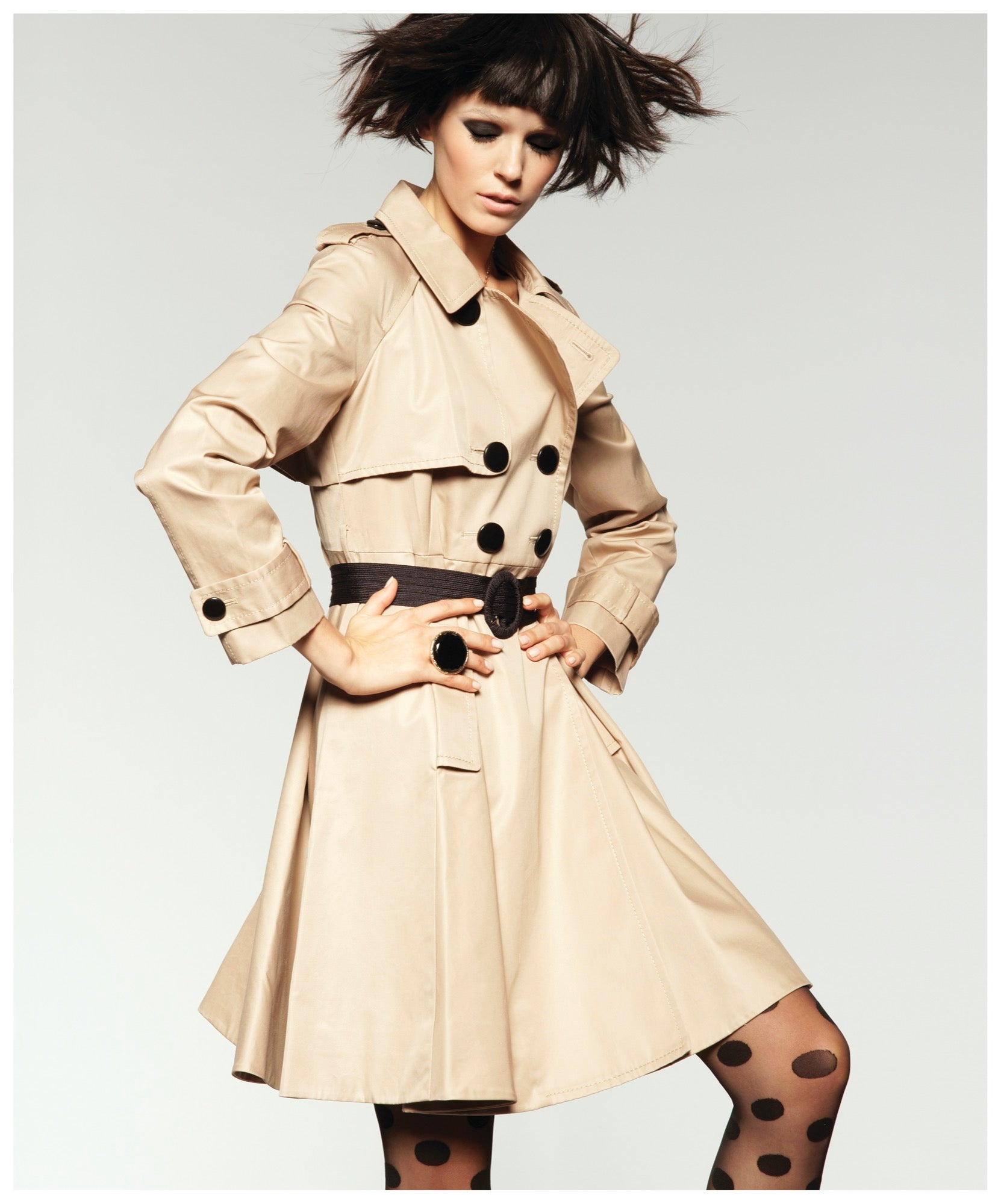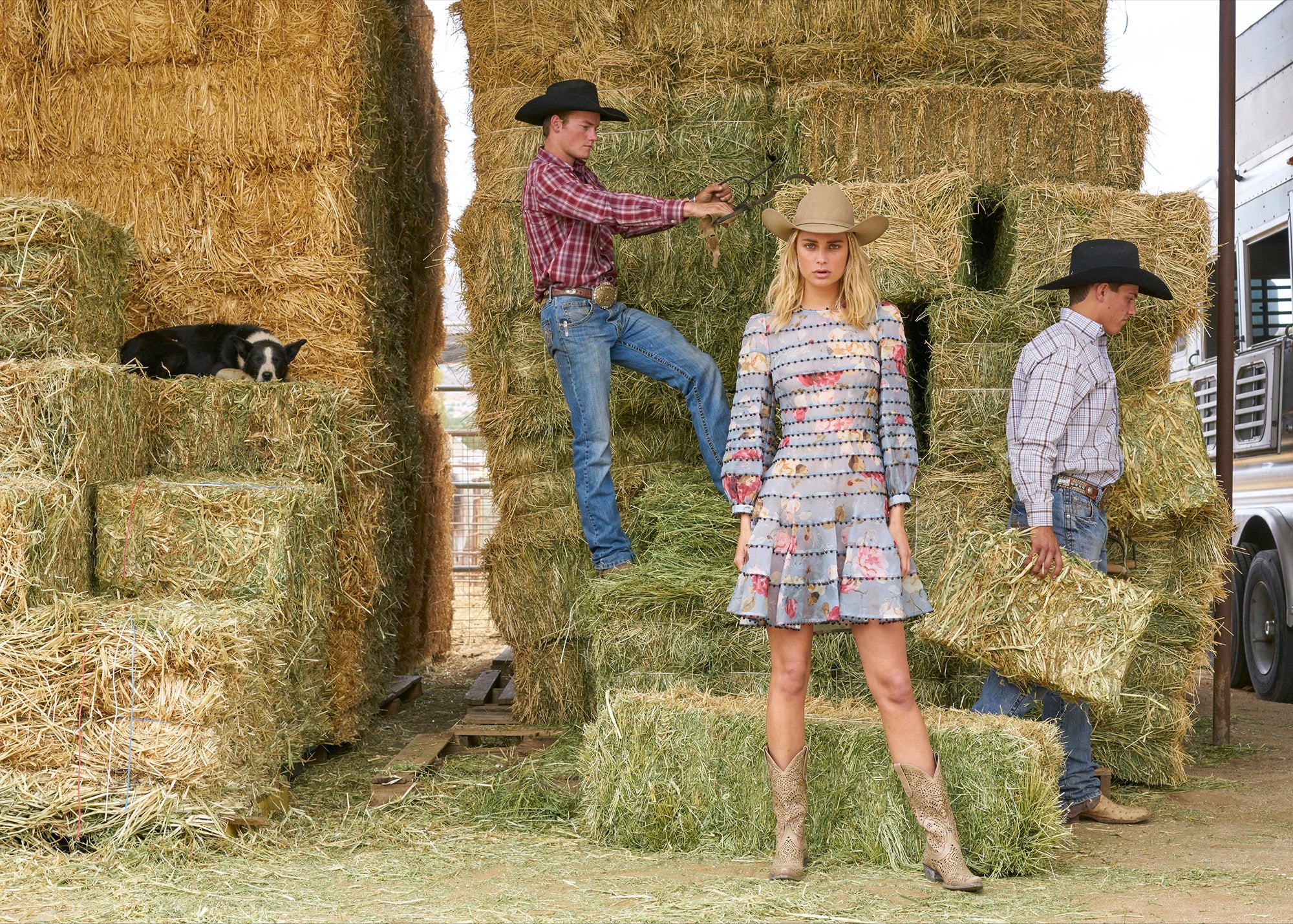Back when I decided I wanted to be a fashion photographer, before cell phones and when I had to walk 20 miles to the studio in my bare feet, in the snow, finding models to work with was also more of a challenge than it is today. Now we have various websites dedicated to connecting models and photographers. Back then, fledgling photographers found themselves in more of a Catch-22. The conundrum was this - how was I going to get an agency-repped model to shoot with me if I didn’t already have a book full of agency girls? What agent would give me a shot? For me, the way around this was to assist an established photographer and have him grease that agency wheel for me.
Having spent a few of those formative years working as an assistant, and working with some of the top models of the day, proper set preparation and etiquette became second nature. I also grew to have a keen understanding of on-set dynamics between photographer, model, creative support team and client. And I learned how to produce high-profile jobs. Indeed, shooting fashion is a learned skill. Or to be specific, shooting fashion for a commercial client in a high-pressure environment with big money on the line, or shooting a fashion story for a high-end magazine, and managing everything that it entails, being the ringleader on such a shoot – those are learned skills.
As I started to make my own work and take on my own clients, all this experience manifested into how I conducted myself when I was driving the show, and how I worked with the models I booked for whatever project I was shooting. All this experience informed how I set the atmosphere in studio or on location, and how I interacted with my teams. It also taught me how to properly prepare for these types of jobs.
Below are some of the “rules” about preparing to work with models and shooting fashion and beauty that I’ve picked up and paid forward over the years.

1. Educate Yourself On What’s Good And What Isn’t
Numero uno for me as a creative is – sensibility. It’s everything. Knowing what is good and what is not is the be-all, end-all. And thus, I come to my rule number one.
Educate your eye. The more educated your eye, the more consistently better choices, and results, you will make and achieve. This includes retouching. Know when enough is enough and too much is too much. I still see a lot of work that is over-worked in post. More isn’t always better and perfection can be very uninteresting. I want to see a photo, not an illustration.
Look at other photographers’ work. I don’t mean the guy down the block, unless that guy’s photos are on the cover of Vogue. Look at the photographers shooting major fashion stories for magazines, for example. If that’s where you want to be, I can’t stress enough how important it is to know who is doing what and who came before you. And look at art, painters, the great masters, you know who they are, or should. Go to a museum, even. If your goal is to get published in a magazine, look at that magazine. Finding BTS online of those already shooting for that, or a similar, magazine will be valuable. With social media has come a plethora of “experts,” so while there’s a ton of good info out there, there’s also a ton of not-so-good info, so choose your references carefully. Take the good tips you pick up, apply them to your work as needed, make them yours, develop an identity and distinguish yourself from the pack. And then once you have your style dialed in, make sure it’s repeatable, that you can do it every time with predictable results.
Doing one’s homework is another great habit to get into. Make a mood board. Have references to show. Make a Pinterest board of inspiration and share it with your crew. I pull photos for these boards with notes specifically for hair, makeup, clothing stylist, client and myself.
2. Know The Ins And Outs Of Your Gear / What I Use
And then there’s gear. It’s so important to know your gear well. For stills my main two cameras are my Sony α9 and α7R III, and my α6500 is always in my bag as well. Which body I prioritize varies with the project. Lens-wise, for fashion, beauty and portraiture I’m almost always reaching for a prime lens. I’d say my bread and butter lenses are my Sony 85mm F/1.4 G Master, Planar T* FE 50mm F/1.4, Sonnar T* FE 55mm F/1.8, 90mm F/2.8 Macro G and on occasion, the 70-200mm F/2.8 G Master. I often still use a handheld light meter and shoot full manual exposure.
My Sony cameras’ Continuous Eye AF is awesome and I’m using it more and more. Recently, when I shot a celebrity portrait on the streets of Downtown Los Angeles employing Continuous Eye AF gave me many more useable and in-focus shots than I have seen before that feature was available. It’s great technology to leverage for better results. Of course, I’m always shooting RAW for maximum dynamic range, for the most latitude in post, and for the best results. I process my RAW files in Capture One for Sony. I feel it’s the best application for RAW processing and color grading, intuitive, sleek, excellent rendering quality and speed.
The big takeaway here, about knowing your gear, is to make sure that once your model steps on set your tech is set as well. You did do lighting tests and fired off a few test frames, right? Not only does this instill confidence in your models and clients, but it also makes you look good, and one thing I learned shooting for big-name clients in Milan, Paris and New York is that some clients like a certain production value, or a bit of a show - image and perception are important. Big lights, cool setups, impress. But none of that matters, not the 12K HMI movie lights or that Briese Focus 180, or whatever cool setup you got going, if you’re fumbling with camera settings or still figuring things out with a camera-ready model on set. There’s no better feeling than shooting that first frame and having it look perfect. I always strive for exactly that.
3. Establish A Solid Crew To Work With
Any good fashion picture is a collaboration. Your crew may be just you and your model, and that’s cool, but to really take your images to the next level, surround yourself with, and collaborate with, and trust, the best crew you’re able to hire, beg, borrow or steal. How do I know this? My level of work took a huge jump from when I was model testing in Milan to shooting with some of the top editors, stylists, makeup and hair for Vogue Italia. I was the same person of course, but collaborating with a world-class team will raise the level of your work exponentially, as long as your work is solid and consistent, both technically and artistically.

4. Cast Your Models Carefully
Respect the time of every model that shows. I’ve had castings for major advertising where upwards of 75 girls have shown. On a casting of that size, I often wished I could just line the girls up and make a preliminary selection of those who stay and those who leave. Of course, I would never do that. And sometimes a girl you may have initially discounted could totally shine once you interact with her. Never discount anyone and know that personality and energy can totally transform how a model is to work with, though that can also work either way. I have worked with jaw-droppingly stunning girls who were totally boring, and with less traditional beauties who really shined on set, and what a pleasure it always is when that happens.
Peripheral to the above, another thing I learned early and often was to never judge my model as she walks in the door, to not prejudge her before makeup and hair is done. You booked your girl by seeing the work she has done either on the agency website or in her book or on a casting, so you should know exactly what you’re getting. Of course, I always ask the agency booker to tell the model to arrive in studio with clean hair and face, ergo, how she looks when she walks in the door is irrelevant.
Similarly, this is fashion, it’s about the clothes. I also never prejudge a garment or outfit when it’s on the hanger. It will look different when on your model.
5. Provide Agents With Good Images
Make sure you send agents some good images. Reliably supplying them with good content will ensure more talent will be available to you.
6. Keep Shooting
Film is cheap and pixels are free. Keep shooting. I have said this and lived this throughout my career, whether I was shooting film back in the day or digital now. Only way to get better is to push pixels through the camera and keep shooting.
7. Practice New Things
Have a new idea? Do it, see how and if it will work, absolutely. Practice, practice, practice. Practice on your friends if you don’t have access to models. Indeed, it’s probably better to try new things on friends, or on a model test, than when more is on the line.
8. Show Off Your Work
Do be ready to show your shots to others. Have a gallery of your work on your phone to show people what you do. It helps legitimize you to people with whom you’d like to collaborate.
9. Learn How To Say No
I mentioned before educating your eye and that it’s the most important thing you can do as a photographer. You’re being hired for your vision, so be true to that when a client may want to hire you to shoot something outside of your wheelhouse. My least successful jobs were the ones early in my career when I wanted to do everything and say yes to everyone. Learn how to say no.
10. Emulate Your Influences
Find your influences. Emulate them. Then make that work your own.



